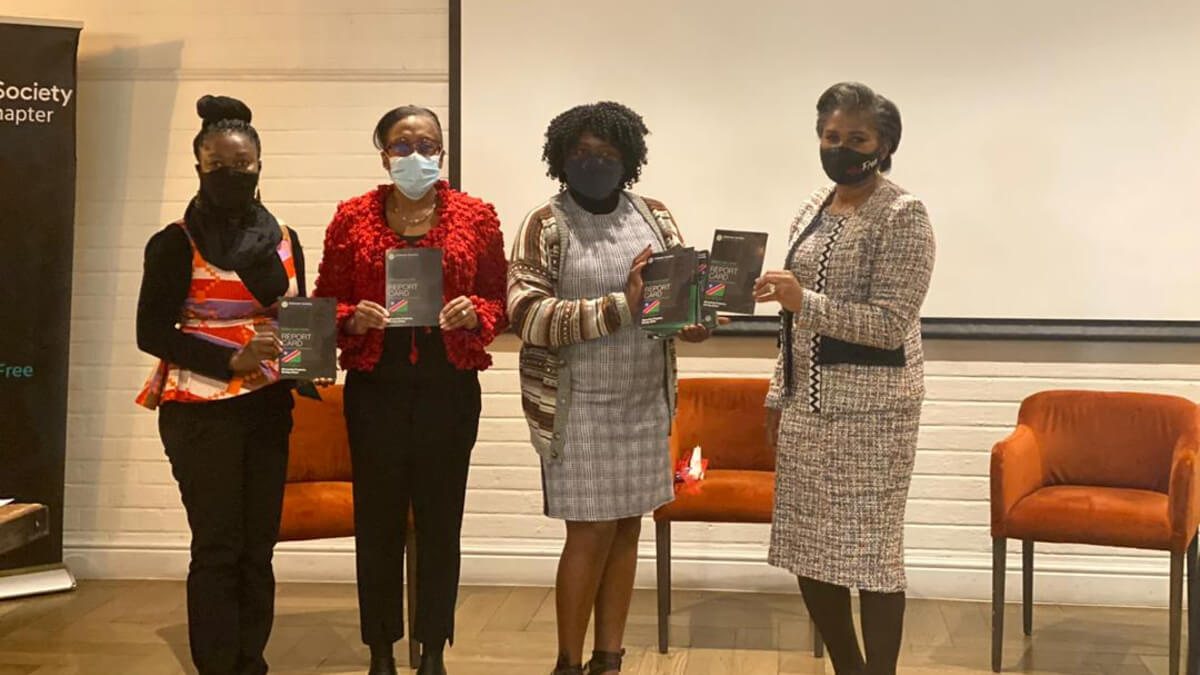This piece was written by Nashilongo Gervasius, Founder of the Internet Society Namibia Chapter, to mark the launch of Namibia’s Women’s Rights Online Gender Audit Report Card. Follow her on Twitter @Nashilongo.
According to the International Telecommunications Union (ITU) the proportion of women using the Internet globally is 48%, compared to 58% of men. This translates into a global Digital Gender Gap thriving at 21%. Within the African continent, the gender gap in internet access is even wider at 50%. The gap means there are disparities and unequal access to the internet between men and women.
In a quest to know how Namibia is doing in policy efforts to close the gender digital gap and using ICT to meaningfully empower women, we ran the first ever independent assessment of the country’s digital readiness to support women’s empowerment, using a global toolkit developed by the Web Foundation with support from UN Women, and the Swedish International Development Cooperation Agency (SIDA).
This research is part of the Women’s Rights Online project that has been carried out in 20 countries across Africa, Asia, Latin America and the Caribbean to measure and understand the gender digital divide across different regions and has supported governments around the world to assess their digital gender gap and implement strategies to close it — towards achieving the Sustainable Development Goals on women and technology.
We are pleased to share with you Namibia’s first Women’s Rights Online Report. The Gender Gap Audit Report Card is used to identify evidence gaps where data on women and ICTs is missing or is not publically available, despite national commitments to monitor related indicators as part of SDG commitments.
For Namibia, our research has found out that only 47% of women have access to the internet. Additionally there is no national policy that recognizes ICTs as a tool for fighting gender inequalities. In the absence of gender-responsive ICT policies, there are also no clear targets set at any level of governance for using ICTs to empower women in Namibia as set out in Sustainable Development Goal 5b that calls for the enhancement of the use of enabling technology, in particular information and communications technology (ICT), to promote the empowerment of women.
Namibia does not collect sex-disaggregated ICT data, which is a key resource necessary to develop policies that are responsive to women’s needs. The Women’s Rights Online research methodology underpinning this study states that, “ICT policies can and must address growing digital gender inequality for women to participate and be heard in the digital revolution, yet a majority of countries’ ICT strategies and policies remain gender-blind.” The country also ranked poorly in the indicators dealing with online safety and access to relevant content.
The report was officially launched on July 30th by the First Lady of the Republic Madam Monica Geingos who in her opening remarks acknowledged that:
“I wish I was surprised by research’s confirmation that women’s issues lag behind in the online space. I am not. The internet is a mirror into society’s soul. It reflects who we truly are. If women’s empowerment and access is a problem in society, it will be a problem online.”
Madam Geingos commended the Internet Society Namibia Chapter for the research saying : “When we read the data, when I go through research, it puts into words and statistics what many of us have been feeling, hearing and seeing our whole lives.”
The research is based on available secondary data sources and expert assessment methodology using 14 indicators for which reliable empirical evidence exists and grading was done in 2020.
Overall, the report analyzed data, policies and frameworks and relevant studies to monitor progress on issues relating to women’s rights online and is guided by the following five indicators:
- Internet Access and Women’s Empowerment
- Affordability
- Digital Skills and Education
- Relevant Content and Services for Women
- Online Safety
To close the current gender gap, the report also proposed a five-point action plan, which called on the government to:
- Improve digital skills interventions for women and girls
- Improve ICT access and affordability
- Prioritize relevant online content for women participation
- Establish specific targets to close ICT gender gap
- Ensure a safe online environment that protects women’s digital rights
Download Namibia’s Women’s Rights Online Gender Audit Report Card to learn more.
For more updates, follow us on Twitter at @webfoundation and sign up to receive our newsletter.
To receive a weekly news brief on the most important stories in tech, subscribe to The Web This Week.
